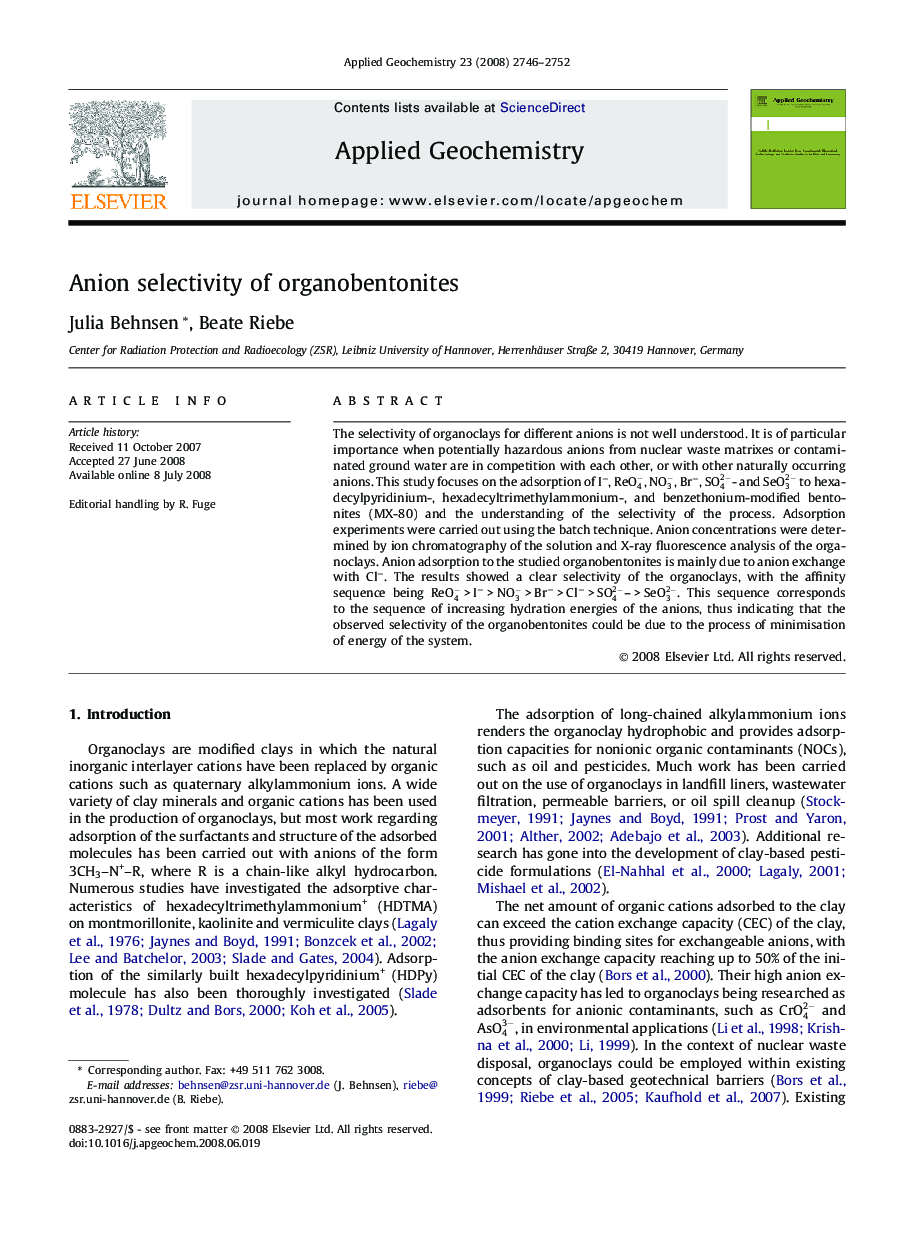| Article ID | Journal | Published Year | Pages | File Type |
|---|---|---|---|---|
| 4437532 | Applied Geochemistry | 2008 | 7 Pages |
The selectivity of organoclays for different anions is not well understood. It is of particular importance when potentially hazardous anions from nuclear waste matrixes or contaminated ground water are in competition with each other, or with other naturally occurring anions. This study focuses on the adsorption of I−, ReO4-, NO3-, Br−, SO42-- and SeO32- to hexadecylpyridinium-, hexadecyltrimethylammonium-, and benzethonium-modified bentonites (MX-80) and the understanding of the selectivity of the process. Adsorption experiments were carried out using the batch technique. Anion concentrations were determined by ion chromatography of the solution and X-ray fluorescence analysis of the organoclays. Anion adsorption to the studied organobentonites is mainly due to anion exchange with Cl−. The results showed a clear selectivity of the organoclays, with the affinity sequence being ReO4- > I− > NO3- > Br− > Cl− > SO42-– > SeO32-. This sequence corresponds to the sequence of increasing hydration energies of the anions, thus indicating that the observed selectivity of the organobentonites could be due to the process of minimisation of energy of the system.
